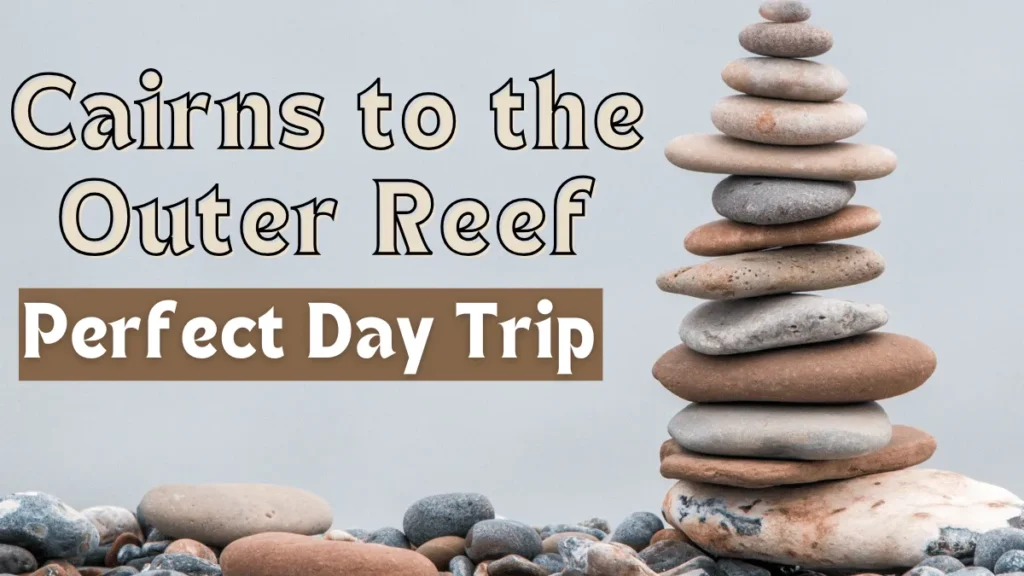
Planning a day trip from Cairns to the Outer Great Barrier Reef? This step-by-step guide covers how long it takes, what to book, what to pack, the typical itinerary, safety tips, and how to pick the best operator, all in plain, friendly language so you can relax and enjoy your reef day.
Why an Outer Reef day trip is worth it
The Outer Reef (think Moore, Norman, Hastings, and the famous ribbon reefs like Agincourt) sits well offshore in clearer water and often delivers the best visibility, colorful coral, and more abundant marine life compared with inner-reef options. That means better snorkelling, more interesting dive sites, and cleaner water for underwater photos.
Quick Facts
- Typical boat travel time to the Outer Reef from Cairns / nearby ports: about 90 minutes on a modern catamaran (times vary by operator and exact reef destination).
- Time spent at the reef/platform: usually 3–5 hours for snorkelling, semi-submersible, or diving activities.
- Best season for clear water and low rain: May–October (dry season), also lower jellyfish/stinger risk in these months.
- Operator offers: snorkel gear, semi-submersible/glass-bottom boat, underwater observatory, and stinger (lycra) suits on most commercial tours.
Also Check: Island Hopping Adventures: Top Reef Islands and How to Plan Them
5 Steps For Outer Reef Perfect Day Trip
Below are five steps to help make your Outer Reef day trip perfect.
Step 1: Choose the right type of trip
Decide what kind of day you want — active (snorkel + dive), relaxed (pontoon + semi-sub), or a mix.
- Pontoon trips: Great for families and non-swimmers — you get a floating platform with easy water access, an underwater observatory, and often guided snorkel zones.
- Fast-boat/snorkel + dive trips: More time in the water and sometimes visits to multiple dive sites — best if you want to maximise snorkel/dive time.
- Live-aboard or multi-day: If you want remote reefs with minimal crowds, consider overnight options (not usually a one-day choice).
Step 2: Pick the reef and the operator
Not all “Outer Reef” trips visit the same reefs. Popular choices near Cairns/Port Douglas include Agincourt and Moore Reef. Look for:
- Clear description of the meeting point and return time.
- Included activities (snorkel equipment, marine-biologist talks, semi-submersible).
- Safety record and accreditation (Marine Park compliance, lifeguards, first-aid).
- Accessibility and family-friendly facilities, if needed.
Tip: read recent reviews (last 6–12 months) reef conditions and service can change seasonally.
Step 3: Book smart (timing and money)
- Book at least a few days ahead in high season (June–September).
- Check whether transfers are included (some operators pick up from Cairns hotels or Port Douglas).
- Look for combo options if you want extra activities (e.g., helmet dive, guided snorkel, or introductory scuba).
Step 4: What to pack (practical checklist)
Most operators supply basic snorkel equipment and stinger suits, but bring personal items for comfort:
- Swimsuit, quick-dry clothes, and a light cover-up.
- Reef-safe sunscreen (use mineral-based sunscreen or a shirt instead).
- Wide-brim hat, sunglasses (polarised if possible), and a small daypack.
- Towel, water bottle, and seasickness remedies if you’re prone to motion sickness.
- A good-fitting snorkel mask if you prefer your own.
- Camera / waterproof phone case — batteries charged.
- ID, credit card, and any certification cards if diving.
For operator-provided items and recommended packing, see local tour pages.
Step 5: On the day: sample itinerary
This sample reflects many Outer Reef day trips — times vary by operator:
- Early morning pickup/check-in (Cairns or Port Douglas).
- Cruise out (≈90 minutes): relax on deck, enjoy commentary.
- Arrival at platform/reef: safety brief, snorkel lesson, and options explained.
- 3–4 hours of activities: snorkelling, semi-sub or underwater observatory, optional dives.
- Lunch on board/afternoon tea, then return cruise.
Safety, Health, and Environmental Tips
Safety is the most important thing is every travel, below i can shre some point that benefits for you;
- Stinger season: Box jellyfish / stinger season is typically in summer — many operators supply or require lycra suits. Plan accordingly and follow crew guidance.
- Respect the reef: Don’t touch or stand on coral, avoid feeding wildlife and use reef-safe sunscreen.
- Check reef health updates: The Great Barrier Reef has suffered severe bleaching and weather damage in recent years; check current conditions and operator advice before you go.
FAQs
Q: How long will I actually be in the water?
A: Expect about 2–3 hours in the water across the day, depending on your chosen activities and operator schedule.
Q: Is it safe for kids?
A: Yes — many pontoons and tours are family-friendly and provide life-vests, guided snorkel zones and supervised activities.
Q: Can I cancel if the weather is bad?
A: Most operators will cancel or change trips for safety; check cancellation and refund policies when booking.
